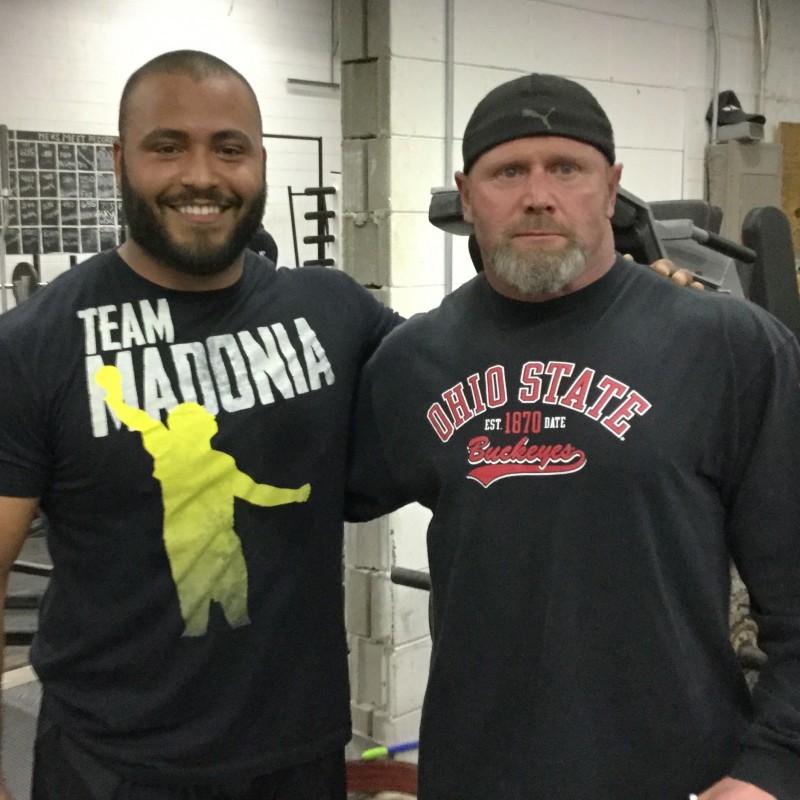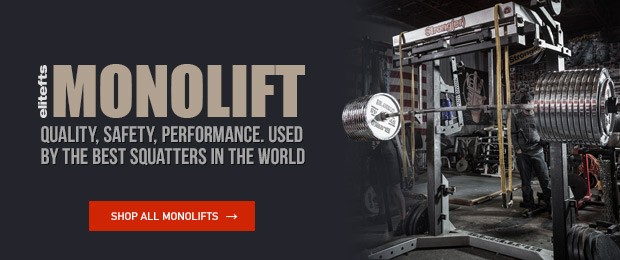
Rob Golabek is one of our multiple All-American former throwers. Rob was one of our first athletes to experiment with this cycle. We made some mistakes early on, but over the years we have refined how we implement it. Feedback from Rob and his teammates helped us correct our mistakes and make this thing work. It’s very important to have "indicator athletes." These are kids that train hard and do what they’re supposed to and then some. I am a huge believer in listening to the feedback of your athletes. That being said, you have to earn the right to have an opinion in your training. After college, Rob moved to Ohio for a few months to train at Westside and ended up earning a key.
Typically our throwers will do a squat cycle going into their conference meet modeled after the infamous circa max phase popularized by Westside Barbell. Circa max just means near-maximal weights, in this case referring to a weight close to the lifter's best competition squat. I don't know or care what their best straight bar squat is as long as I know they are getting stronger. Most of the time when we hit circa max, everyone PRs.
WATCH: Table Talk with Nate Harvey — Max Effort Training for Athletes
Why do we do a "powerlifter's" peaking phase? We do this because each time I use this method myself I feel like I could run through a wall come meet day. When evaluating training for athletes, I also always ask myself, "Would this have helped me when I was a real athlete?" The answer was yes when I was evaluating this method. Now after six years of using this cycle, we have proof that it works. We're going after maximal CNS stimulation on this day. It's very common for our kids to report back how they had trouble thinking straight in class the rest of the day or just being totally smoked. I'm not someone who constantly crushes kids in the weight room, but when the time is right they need to step up and destroy some shit — and possibly themselves in the process. I also completely understand that maximal strength is not a thrower's number one priority for their sport. This is why we taper down the training load and specify more in the weeks leading up to the conference. Circle MACS (because they’re throwers and we’re in the MAC conference) day is about shocking the nervous system.
The setup and timing is based on the theory of delayed transformation or super-compensation. Very simply, this theory suggests that what you train will show up three weeks later. This is why the hardest day is done three weeks out from the big meet. Not only have I seen this work in practice but I have also witnessed it work in reverse. If an athlete stops training or starts using an inferior training program, it's usually around three to four weeks that they start feeling like shit. I have also seen overtraining work this way. Just like clockwork, three to four weeks in after too much stimulation (volume, too much high-taxing movement selection, not enough recovery, etc.) on the kids, they start falling apart.
National Shot put Champion Jon Jones hitting 565 and 400lbs of band tension in week one of his Circa Max Phase a few years ago.
Guidelines
- Use a rackable cambered bar. There is no point beating your kids' shoulders up if you don't have to.
- Squat to a parallel box.
- Take about seven sets to get up to your 1RM.
- Almost double your normal band tension. Typical band use is one blue (for around 200 pounds) while circa max band use is a blue and a grey (for around 350 pounds).
Circle MACS Cycle
Week 1
- Make this your max effort day (approximately 21 days out from your big meet).
- For speed day this week use the cambered bar and the same band tension.
- Use approximately 30% of the bar weight you got on max effort day (if the sets are slow you can decrease bar weight).
- 6-8 x 2 (sets depend on your athlete's work capacity)
- Pair each work set with three reps of a box jump variation. Pick a jump you feel is closest to your sport in muscle action (reactive, iso to dynamic). Rest one minute before squatting again.
Week 2
- Max effort day at 14 days out can be any squat or pull variation.
- If kids seem like they aren’t too beat down, do a true max effort day. We will usually take a true max effort. We still have two weeks to recover.
- If they are looking beat up, tired, and lethargic then take them up to what feels like 80% of a max (eight points on a scale of 10).
- Speed day this week is cambered bar and same band tension as week one.
- Approximately 30% of the bar weight you got on max effort day (if the sets are slow you can decrease bar weight).
- 6 x 2
- Pair each work set with three reps of a box jump variation. Pick a jump you feel is closest to your sport in muscle action (reactive, iso to dynamic). Rest one minute before squatting again.
Week 3 – Meet Week
- Max effort day at seven days out should include no max effort work. Do your speed day instead.
- Speed day this week is cambered bar again.
- Take the lesser band off. For example, if you were using a grey and a red in weeks one and two, take the red off.
- Approximately 30% of the bar weight you got on max effort day (if the sets are slow you can decrease bar weight).
- 4 x 2
- Pair each work set with three reps of a box jump variation. Pick a jump you feel is closest to your sport in muscle action (reactive, iso to dynamic). Rest one minute before squatting again.
Accessory Work
We normally build the volume on the accessory work each week or add sets. Since this cycle is so taxing we keep all the sets moderate in number (three to four sets). On meet week, we may decrease them as low as two if the athletes need it. Most of our accessory movements are also not very taxing (such as reverse hyper as opposed to Romanian deadlift).
There it is, the mythical circa max phase broken down and applied to athletes!












Good question!
Nharvey@elitefts.net if you need anything else!